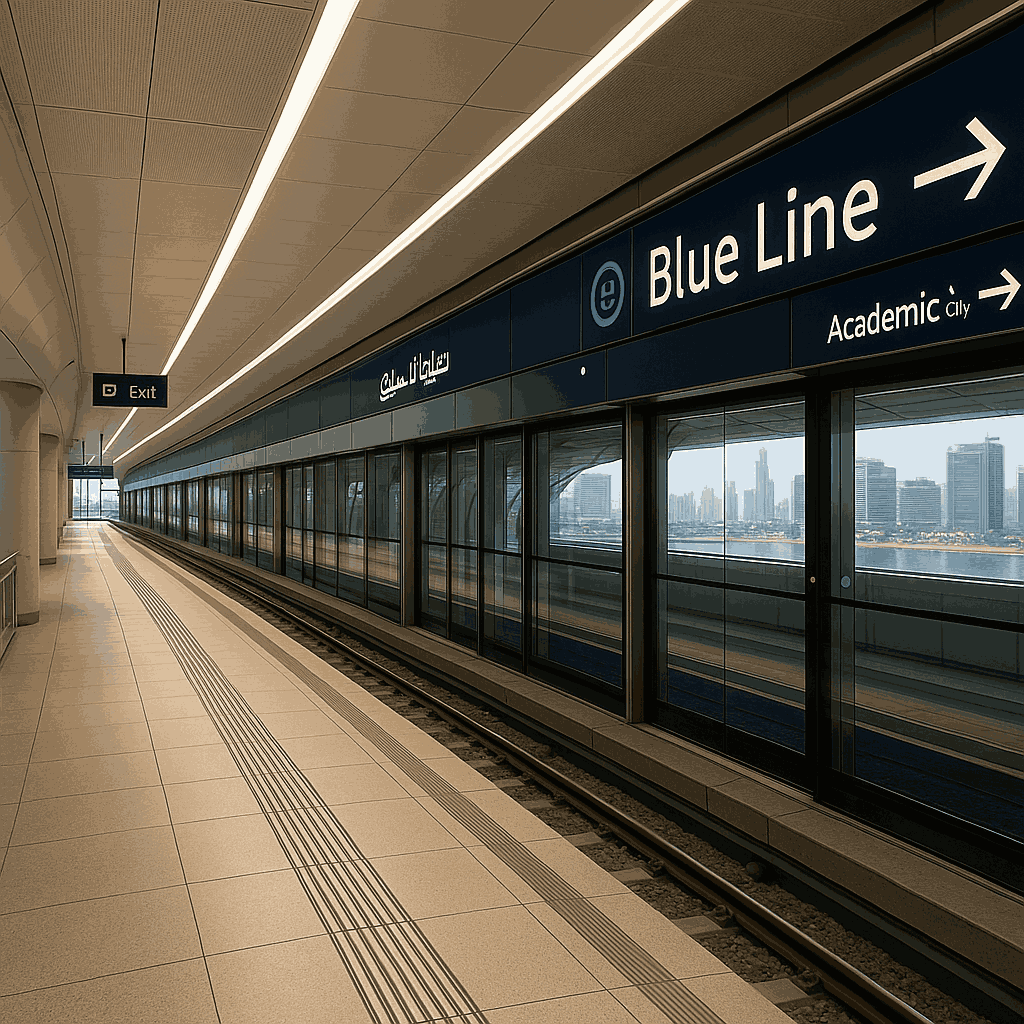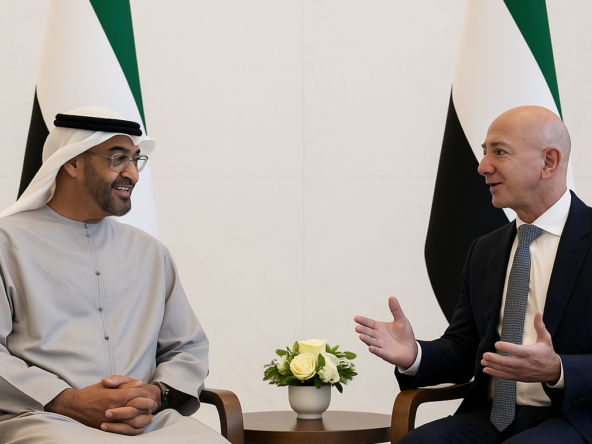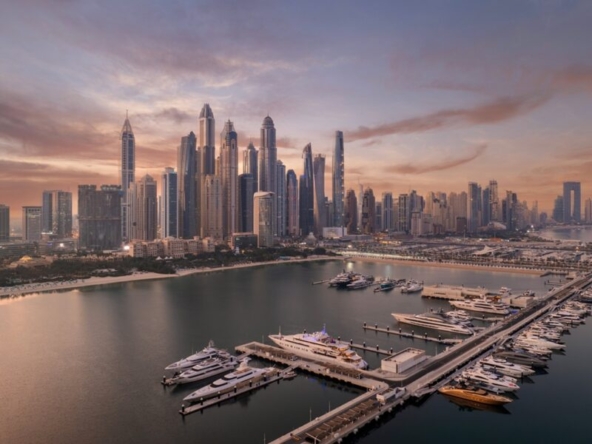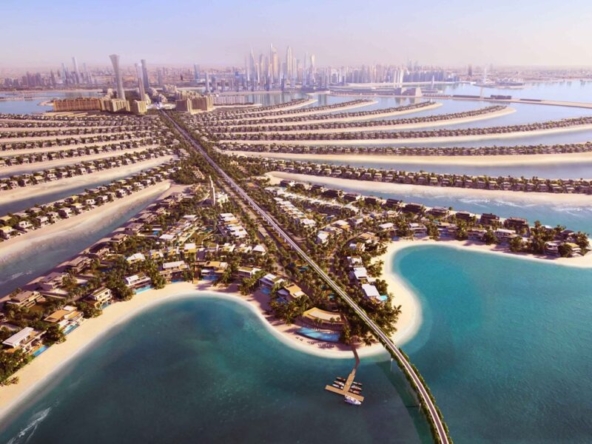The Dubai Metro Blue Line is set to redefine the future of public transportation in the UAE, ushering in a new era of connectivity and urban mobility. With construction officially underway and a target completion date of 2029, this transformative infrastructure project is strategically aligned with Dubai’s urban expansion plans and its commitment to sustainable development.
Strategic Route Connecting Key Growth Zones
The Blue Line will stretch across 30 kilometers, incorporating 14 new stations, including underground, elevated, and at-grade platforms. The route is carefully planned to connect key urban and economic zones, including:
-
International City
-
Silicon Oasis
-
Mirdif
-
Ras Al Khor
-
Dubai Creek Harbour
-
Dubai International Airport (DXB)
This alignment aims to decongest roads, provide commuters with efficient alternatives, and enhance accessibility between residential, commercial, and tourism hubs.
Faster Commutes, Reduced Traffic
A core promise of the Dubai Metro Blue Line is its ability to drastically reduce commute times. According to the Dubai Roads and Transport Authority (RTA), travel time from Dubai International Airport to Mirdif will be cut down by more than 50% once the line is fully operational.
Moreover, the line will integrate seamlessly with existing metro lines—particularly the Red and Green Lines—thereby enabling easy transfers and smoother city-wide navigation. Intermodal transport efficiency will become a hallmark of Dubai’s metro system by 2029.
Smart, Sustainable Transport Infrastructure
Dubai continues to lead in smart city innovation, and the Blue Line metro construction reflects this. Key features of the new line include:
-
Driverless trains equipped with AI-powered safety and monitoring systems.
-
Energy-efficient stations powered by solar panels and automated HVAC systems.
-
Real-time passenger flow analytics and smart ticketing systems.
-
Green construction techniques to minimize environmental impact during development.
By combining sustainability with cutting-edge technology, the Blue Line supports Dubai’s Net Zero Carbon Emissions Strategy 2050 and the Dubai Urban Plan 2040.
Major Economic and Urban Impact
The construction and eventual operation of the Blue Line will have a profound economic impact. It is expected to:
-
Create thousands of construction and engineering jobs over the next 4 years.
-
Increase property values in connected districts such as Ras Al Khor, Dubai Silicon Oasis, and Mirdif.
-
Boost commercial activities near new stations due to improved footfall.
-
Attract foreign direct investment (FDI) in areas supported by advanced transport links.
This project is not just a metro extension; it’s a high-impact economic catalyst that aligns with Dubai’s broader growth strategy.
Construction Timeline and Phases
The Dubai Metro Blue Line project is divided into multiple phases:
Phase 1 (2024-2025): Design and Site Preparation
-
Completion of geotechnical surveys
-
Finalization of urban integration plans
-
Site clearance and early excavation in underground station zones
Phase 2 (2025-2027): Infrastructure and Civil Works
-
Tunnel boring for underground stations
-
Erection of elevated track segments
-
Station superstructure developments
Phase 3 (2027-2028): Systems Integration and Testing
-
Installation of signaling systems, ticketing modules, and AI software
-
Safety audits and stress testing of rolling stock
Phase 4 (2029): Operational Launch
-
Final trial runs
-
Public awareness campaigns
-
Full commercial service launch across all 14 stations
Key Partnerships and International Involvement
To deliver such a monumental project, the Dubai Roads and Transport Authority (RTA) has partnered with leading global infrastructure firms, including:
-
Hitachi Rail (for smart transport systems)
-
ACCIONA (civil works and sustainability)
-
Hyundai Engineering & Construction
-
Siemens Mobility (signal and AI integration)
These partnerships ensure that the Blue Line is built using world-class standards and future-proof technologies.
Dubai Metro Blue Line vs. Existing Lines
| Feature | Red/Green Lines | Blue Line (New) |
|---|---|---|
| Year of Inception | 2009/2011 | 2029 |
| Total Length | ~75 km | 30 km |
| Number of Stations | 49 combined | 14 |
| Smart Tech Integration | Basic automation | Full AI & predictive systems |
| Energy Efficiency | Moderate | High – Solar & Green Tech |
| Intercity Coverage | Centralized | Covers key growth corridors |
This comparative table shows the technological and strategic leap offered by the Blue Line.
Public Reception and Anticipation
Public response to the Blue Line announcement has been overwhelmingly positive. Residents in areas such as Silicon Oasis and International City, previously underserved by metro access, are especially enthusiastic. Social media trends show increased interest in property purchases and rentals along the projected route.
Moreover, business owners, logistics firms, and tour operators have expressed optimism over the expected rise in accessibility and efficiency.
Supporting Dubai’s Vision for 2040
The Dubai Urban Master Plan 2040 envisions a city that is pedestrian-friendly, carbon-conscious, and economically diversified. The Blue Line supports this vision by:
-
Encouraging public transport adoption
-
Decreasing reliance on private cars
-
Connecting affordable housing to job centers
-
Reducing intra-city commute times
This metro line is not merely a convenience—it’s a structural pillar in Dubai’s long-term blueprint for prosperity.
Conclusion: A Leap Toward the Future
The launch of the Dubai Metro Blue Line construction marks a pivotal milestone in the city’s evolution. As the emirate gears up to host more international events and accommodate a rapidly growing population, this state-of-the-art transit system will serve as a backbone of urban movement.
With a firm eye on 2030 and beyond, the Blue Line promises to be more than just a train system—it’s the gateway to smarter living, economic upliftment, and sustainable progress in Dubai.




